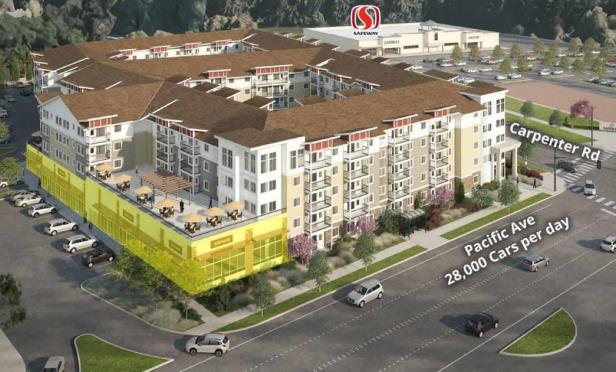 Reserve at Lacey is a property serving those 55 or older who earn 60% of the area median income.
Reserve at Lacey is a property serving those 55 or older who earn 60% of the area median income.
LACEY, WA—Positive demographics and higher cap rates compared with other investment options have brought more attention to the senior housing property segment during the past few years. Today's seniors housing market is characterized by a wealth of available capital but a limited number of quality operators who have the capacity to expand services, according to a report by Marcus & Millichap.
One property has bucked that trend, and a recent combined construction and permanent loan will make 241 units of quality affordable housing accessible to seniors aged 55 or older. KeyBank Community Development Lending and Investment provided $70 million in combined construction and permanent loan financing to AVS Communities for the Reserve at Lacey, an affordable senior housing property serving those 55 or older who earn 60% of the area median income. KeyBank paired a $40 million construction loan with a $30 million private placement-forward commitment permanent loan. Victoria Quinn of KeyBank's CDLI team organized the financing.
The Reserve at Lacey has a mix of one- and two-bedroom units. Its amenities include indoor and outdoor gathering spaces, a fully equipped exercise room, a pool and a computer center. In addition, the units include private decks or patios, microwaves, dishwashers, washers and dryers. Complex amenities will include a social room, wellness room, office, beauty salon, game room, fitness center, indoor pool/spa, theater and private dining area.
“The Reserve at Lacey property is unique for residents living there. The residents have a dedicated staff who work with all available nearby community service organizations, including Senior Services for the South Sound, to offer senior and healthcare services as needed,” Quinn tells GlobeSt.com. “To help foster a sense of community at the property, the staff will coordinate frequent activities for residents such as potluck suppers and movie nights.”
Technology, policy changes and consolidation among providers and services are just a few factors driving today's healthcare industry, says the Marcus & Millichap report. These factors are constantly changing and operators of today's seniors housing properties must be prepared to adapt as new trends emerge.
The key ingredient strengthening demand is the aging population. This rising demand has encouraged a flurry of supply additions in recent years and an expanded construction pipeline as developers seek to meet the housing needs of older adults. Deliveries have raced ahead of demand in the near term, resulting in some softening of occupancy for the majority of seniors housing.
Furthermore, capital is widely available as cap rates tick up. Some challenges exist in the market today as operators are faced with staffing shortages, rising costs and changes to reimbursement structures. This has led to a modest reduction of buyer activity and an uptick in cap rates as some investors look at restructuring portfolios. First-year yields and pricing vary widely depending on unit mix and quality of revenue. Properties with a retirement model such as senior apartments and independent living facilities trade with cap rates on the lower end of the spectrum, while communities providing more medical services such as memory care or skilled nursing facilities yield higher returns, according to the report.
© Touchpoint Markets, All Rights Reserved. Request academic re-use from www.copyright.com. All other uses, submit a request to [email protected]. For more inforrmation visit Asset & Logo Licensing.







